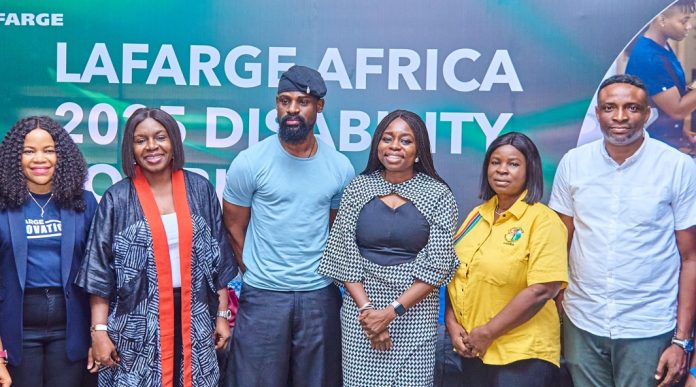The Nigerian economy runs on revenue from crude oil and the importance of effective financing of oil and gas projects cannot be overstated. Its contribution to the nation’s coffers in 2017 alone was ₦7.33 trillion, according to the country’s apex bank, Central Bank of Nigeria (CBN). But in order to unlock the industry’s potentials in terms of increasing crude reserves and production, the introduction of new projects and review of old ones in the industry are paramount.
After years of failed self- financing of oil and gas projects through joint venture (JV) arrangements, the Nigerian government through the nation’s oil company, Nigerian National Petroleum Company (NNPC) is slowly but surely treading the path that should bring growth to the industry.
Oil and gas projects are usually funded through four major types of arrangement adopted by the Nigerian government through NNPC and international oil companies (IOCs) and indigenous companies. They include joint venture (JV), production sharing contracts (PSCs), service contract (SC), and marginal field concession (MFC).
Joint venture was the standard agreement and was usually done by the national oil company, Nigerian National Petroleum Corporation (NNPC) and an international oil company (IOC). Under this arrangement, all shareholders of the project fund the project through joint venture cash calls, where NNPC is usually the largest shareholder. They also receive crude oil
produced, according to the equity ratio.
However, the JV projects in the past have faced serious funding problems as NNPC was unable to meet its funding obligations leading to projects suffering setbacks and eventual abandonment, while the JV cash calls arrears also kept piling up. Maikanti Baru, Group Managing Director of the NNPC, said that the JV cash calls arrears amounted to $1 billion in 2016 alone and $6 billion pre-2016.
Ibe Kachikwu, minister of state for petroleum resources, also said that the federal government was looking to sell five percent of its stake in its JV with IOCs, but he added that the process would be a lengthy one and couldn’t be completed in a year.
Other alternative methods of financing (PSCs, SC, and MFC) were then adopted and the government has said that it is slowly phasing out JV arrangement.
Contractors financing model, which includes production sharing contracts and service contracts (PSCs and SC) is the preferred form of arrangement and most upstream operations were awarded through PSCs. Under this form of arrangement, NNPC engages the IOC or the indigenous company as contractor to conduct petroleum operations on behalf of itself and NNPC and the contractor take on the financing risk. If the exploration is successful, the contractor is entitled to recover its costs on commencement of commercial production. If the operation is not successful, the contractor bears the loss.
Several other models of PSCs have been signed since the first set of PSCs was signed in 1993, and executed in 2001, after the 2000 licensing rounds. The principles in the PSCs remain largely the same, except for variation in the profit oil sharing formula and cost oil recovery cap.
PSC has gradually overtaken JV as the highest contributor to the total crude output of the country and an analysis carried out by business a.m. revealed that PSCs’ contribution to the total crude production has gradually increased over the past few years; it averaged 44.58 percent between January-November 2017 while JV’s stood at 30.77 percent, according to NNPC monthly financial report.
Also, a recent project which NNPC believes would be the vehicle for wheeling out JV cash call arrangements and would fully usher in the con- tractor financing model (PSCs and SCs) is newly awarded Ajaokuta – Kaduna – Kano
(AKK) gas pipeline which would be financed completely by a consortium of indigenous and Chinese companies under a contractor financing model.
Maikanti Baru, group managing director of NNPC, had said that the AKK section has suffered setbacks due to scarce resources for government to fully finance the $2.8 billion project, and hence the adoption of the contractor financing model.
In the same vein, Baru said the nation’s four refineries would be rehabilitated using the contractor-financing model, and that the tendering exercises for companies interested in the rehabilitation programmes of the nation’s four refineries had been completed and successful companies for the different projects would soon be announced.
Other projects are the $1.2 billion multi-year drill- ing financing project code named Project Cheetah, un- der NNPC/Chevron Nigeria Limited joint venture (JV) with a total of 36 wells (23 onshore and 13 offshore); the $2.5 billion alternative fund- ing arrangements for NNPC/ SPDC JV ($1 billion) termed project Santolina; NNPC/ CNL JV ($780 million) termed project Falcon, as well as the NNPC/First E&P JV and Sch- lumberger Agreement ($700 million).
Project Cheetah is expected to increase crude oil production by 41,000 barrels per day and 127Mmscfd. Following the aforementioned are projects, Santolina, Falcon and the NNPC/First E&P JV and Schlumberger Funding Arrangement, which are expected to increase combined production of crude oil and condensate by 150,000 barrels per day and 618MMscfd of gas, Baru added.
He also noted that “the four projects alone are going to raise incremental revenues to Nigeria of over $30 billion over the life of the projects in less than 10 years.”
On the other hand, the third model, service contracts are the less popular of the two contractor financing model. Under this model, the contractor undertakes exploration, development and production activities for, and on behalf of, NNPC or the concession holder, at its own risk. The concession ownership remains entirely with the NNPC/ holder, and the contractor has no title to the oil produced.
The contractor is then reimbursed cost incurred only from proceeds of oil sold and is paid periodical remuneration in accordance with the formulae stipulated in the contract; however, the contractor has the first option to buy back the crude oil produced from the concession.
The last model is the marginal field concession, whereby IOCs were encouraged by the Federal Government (FG), to surrender their marginal fields for assignment to indigenous concession holders in order to increase local participation. According to business a.m analysis using NNPC data, marginal fields’ contribution to the total crude production from January 2017 to November 2017 averaged 5.94 percent.
In order to enhance efficiency and guarantee growth in the nation’s oil and gas industry, an evolving funding mechanism for the JV operations aimed at eliminating cash call regime, while aligning with the present administration’s far-reaching reforms, is needed.








